




XMy immediate intention for the globe design was to create an image that was stark and bold with questions for the viewer to ponder and consider about the ramification of the Transatlantic Trade in Enslaved Africans and its damning legacy. I wanted to reference th... |
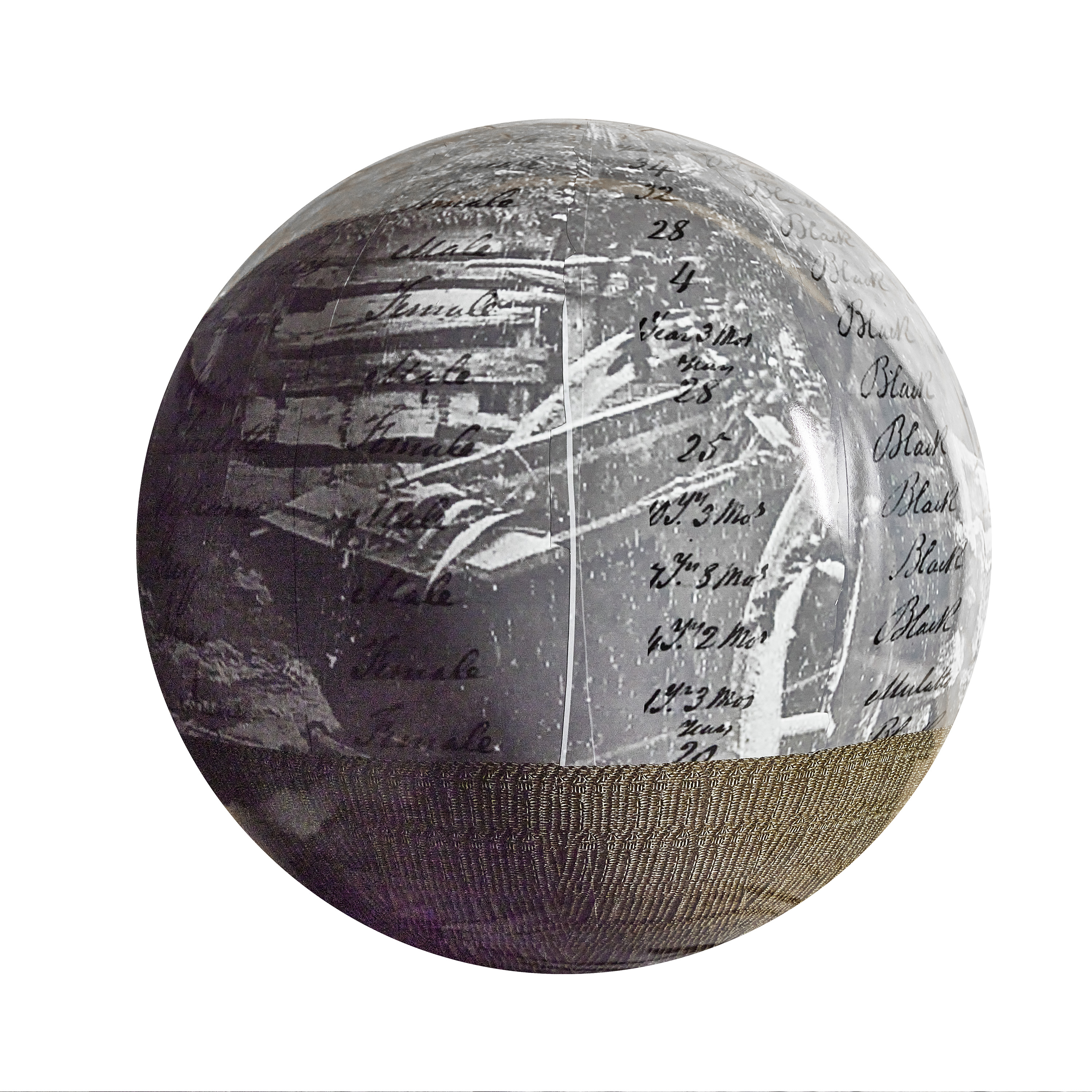
Abstraction Be DamnedThe Transatlantic Trade in Enslaved Africans is an abstract concept for most of the world. Macro concepts such as “Africa” and “the West” are frequently used loosely in conversation. The British, having established a system for slaver compensation p... |


| Legacy Centre of Excellence, B6 4UU |
The work of making racial justice a reality must be rooted in community – in our individual and collective experiences, hopes and contributions. Create Not Destroy’s design was created in response to dialogue and workshops with local communities.
My immediate intention for the globe design was to create an image that was stark and bold with questions for the viewer to ponder and consider about the ramification of the Transatlantic Trade in Enslaved Africans and its damning legacy.
I wanted to reference the graphic nature of poster art and protest art, so in my piece I have painted a protest. On the placards the protesters hold I added information and comments about the Transatlantic Trade in Enslaved Africans. I also wanted to relate the historical struggle for abolition to our struggles today for equality and justice.
As I engaged with the community in Birmingham in preparing this work, I wanted to represent their feeling of loss but also of unity.
Based in London and the West Midlands with history steeped in early London graffiti art culture and graphic design. Create Not Destroy specialises in Videography, Photography, Mural Art and Design.
The work of making racial justice a reality must be rooted in community – in our individual and collective experiences, hopes and contributions. Create Not Destroy’s design was created in response to dialogue and workshops with local communities.
My immediate intention for the globe design was to create an image that was stark and bold with questions for the viewer to ponder and consider about the ramification of the Transatlantic Trade in Enslaved Africans and its damning legacy.
I wanted to reference the graphic nature of poster art and protest art, so in my piece I have painted a protest. On the placards the protesters hold I added information and comments about the Transatlantic Trade in Enslaved Africans. I also wanted to relate the historical struggle for abolition to our struggles today for equality and justice.
As I engaged with the community in Birmingham in preparing this work, I wanted to represent their feeling of loss but also of unity.
Based in London and the West Midlands with history steeped in early London graffiti art culture and graphic design. Create Not Destroy specialises in Videography, Photography, Mural Art and Design.


Tamika's design responds to the theme ‘Abolition & Emancipation’, which shares the story of the campaign for abolition, its key events, heroes and allies. It also lays bare the full, messy motivations and process of abolition, which were not as pure as often represented.
The Transatlantic Trade in Enslaved Africans is an abstract concept for most of the world. Macro concepts such as “Africa” and “the West” are frequently used loosely in conversation.
The British, having established a system for slaver compensation prior to emancipation, kept painstakingly detailed records of the enslaved who were displaced to their colonial dependencies. For those of us in post-colonial Caribbean countries, the registers of the enslaved make the experience much more micro; individual details of the enslaved in our respective countries is quantifiable, even if only for a short space of time.
This globe design superimposes a snapshot of the register of enslaved people from Golden Grove plantation in Cat Island in the Bahamas from 1822, alongside some of the earliest photographs of the colonial Bahamas by J.F.Coonley (1889) and William Henry Jackson (1905) from the National Art Gallery of The Bahamas’ National Collection.
It contains the names of Charlotte: an enslaved woman who, based upon archival records, played a large part in the uprising of enslaved people at Golden Grove in 1831 – and who made several attempts on the lives of her slavers – as well as her children, William and Guy.
The advent of photography on the heels of the end of apprenticeship in British colonies contributed to a purposely skewed and romanticised representation of people and place. But the registers of the enslaved take us closer to truths surrounding the conditions of their existence – one of the most glaring is that slavers truly regarded them simply as chattel.
Tamika is a documentarian and multimedia visual artist. A Bahamian native, Tamika’s work examines the complexities of living in a place shrouded in tourism’s ideal during the age of climate concerns.
Emphasising the importance of Bahamian cultural identity for cultural preservation, Tamika documents aspects of Bahamian life not curated for tourist consumption to intervene in the historical archive. This work counters the widely held paradisiacal view of the Caribbean, the origins of which arose post-emancipation through a controlled, systematic visual framing and commodification of the tropics.
Tamika's design responds to the theme ‘Abolition & Emancipation’, which shares the story of the campaign for abolition, its key events, heroes and allies. It also lays bare the full, messy motivations and process of abolition, which were not as pure as often represented.
The Transatlantic Trade in Enslaved Africans is an abstract concept for most of the world. Macro concepts such as “Africa” and “the West” are frequently used loosely in conversation.
The British, having established a system for slaver compensation prior to emancipation, kept painstakingly detailed records of the enslaved who were displaced to their colonial dependencies. For those of us in post-colonial Caribbean countries, the registers of the enslaved make the experience much more micro; individual details of the enslaved in our respective countries is quantifiable, even if only for a short space of time.
This globe design superimposes a snapshot of the register of enslaved people from Golden Grove plantation in Cat Island in the Bahamas from 1822, alongside some of the earliest photographs of the colonial Bahamas by J.F.Coonley (1889) and William Henry Jackson (1905) from the National Art Gallery of The Bahamas’ National Collection.
It contains the names of Charlotte: an enslaved woman who, based upon archival records, played a large part in the uprising of enslaved people at Golden Grove in 1831 – and who made several attempts on the lives of her slavers – as well as her children, William and Guy.
The advent of photography on the heels of the end of apprenticeship in British colonies contributed to a purposely skewed and romanticised representation of people and place. But the registers of the enslaved take us closer to truths surrounding the conditions of their existence – one of the most glaring is that slavers truly regarded them simply as chattel.
Tamika is a documentarian and multimedia visual artist. A Bahamian native, Tamika’s work examines the complexities of living in a place shrouded in tourism’s ideal during the age of climate concerns.
Emphasising the importance of Bahamian cultural identity for cultural preservation, Tamika documents aspects of Bahamian life not curated for tourist consumption to intervene in the historical archive. This work counters the widely held paradisiacal view of the Caribbean, the origins of which arose post-emancipation through a controlled, systematic visual framing and commodification of the tropics.

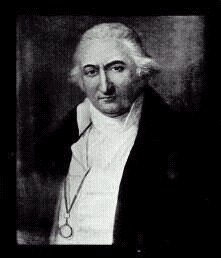
| Steel House Lane |
The Galtons are a family from Birmingham who made their wealth from manufacturing
and selling guns. It is believed that Samuel Galton Snr. (1720-1799) first got involved in the gun trade in the 1750s when working with his father in law James Farmer. He later established his own gun making firm on Steel House Lane. By 1773, his son Samuel John Galton Jr was managing the family firm, a year later becoming an equal partner. A member of the Lunar Society, Samuel John Galton Jr was known as a successful businessman with
involvement in a variety of ventures, including canal development. His son Samuel, later succeeded him. It has been estimated that 150,000 guns made in Birmingham from the 1760s were exchanged for enslaved Africans. Some of these guns were manufactured by The Galton’s.
The Galtons are a family from Birmingham who made their wealth from manufacturing
and selling guns. It is believed that Samuel Galton Snr. (1720-1799) first got involved in the gun trade in the 1750s when working with his father in law James Farmer. He later established his own gun making firm on Steel House Lane. By 1773, his son Samuel John Galton Jr was managing the family firm, a year later becoming an equal partner. A member of the Lunar Society, Samuel John Galton Jr was known as a successful businessman with
involvement in a variety of ventures, including canal development. His son Samuel, later succeeded him. It has been estimated that 150,000 guns made in Birmingham from the 1760s were exchanged for enslaved Africans. Some of these guns were manufactured by The Galton’s.

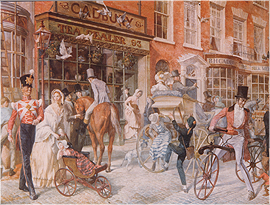
| 93 Bull Street |
In 1824, Cadbury’s Chocolate founder, John Cadbury (1801 – 11 May 1889) opened his first Cadbury’s shop at 93 Bull Street. Previously an apprentice to a tea dealer in Leeds, John sold cocoa and drinking chocolate, which he prepared himself using a pestle and Mortar from 93 Bull Street. In 1831, he moved from this shop to a factory in Crooked Lane so that he could start producing chocolate on a commercial scale. His new property was a four-story warehouse.
John Cadbury’s first shop on Bull St, 1824 | © Cadbury
In 1824, Cadbury’s Chocolate founder, John Cadbury (1801 – 11 May 1889) opened his first Cadbury’s shop at 93 Bull Street. Previously an apprentice to a tea dealer in Leeds, John sold cocoa and drinking chocolate, which he prepared himself using a pestle and Mortar from 93 Bull Street. In 1831, he moved from this shop to a factory in Crooked Lane so that he could start producing chocolate on a commercial scale. His new property was a four-story warehouse.
John Cadbury’s first shop on Bull St, 1824 | © Cadbury

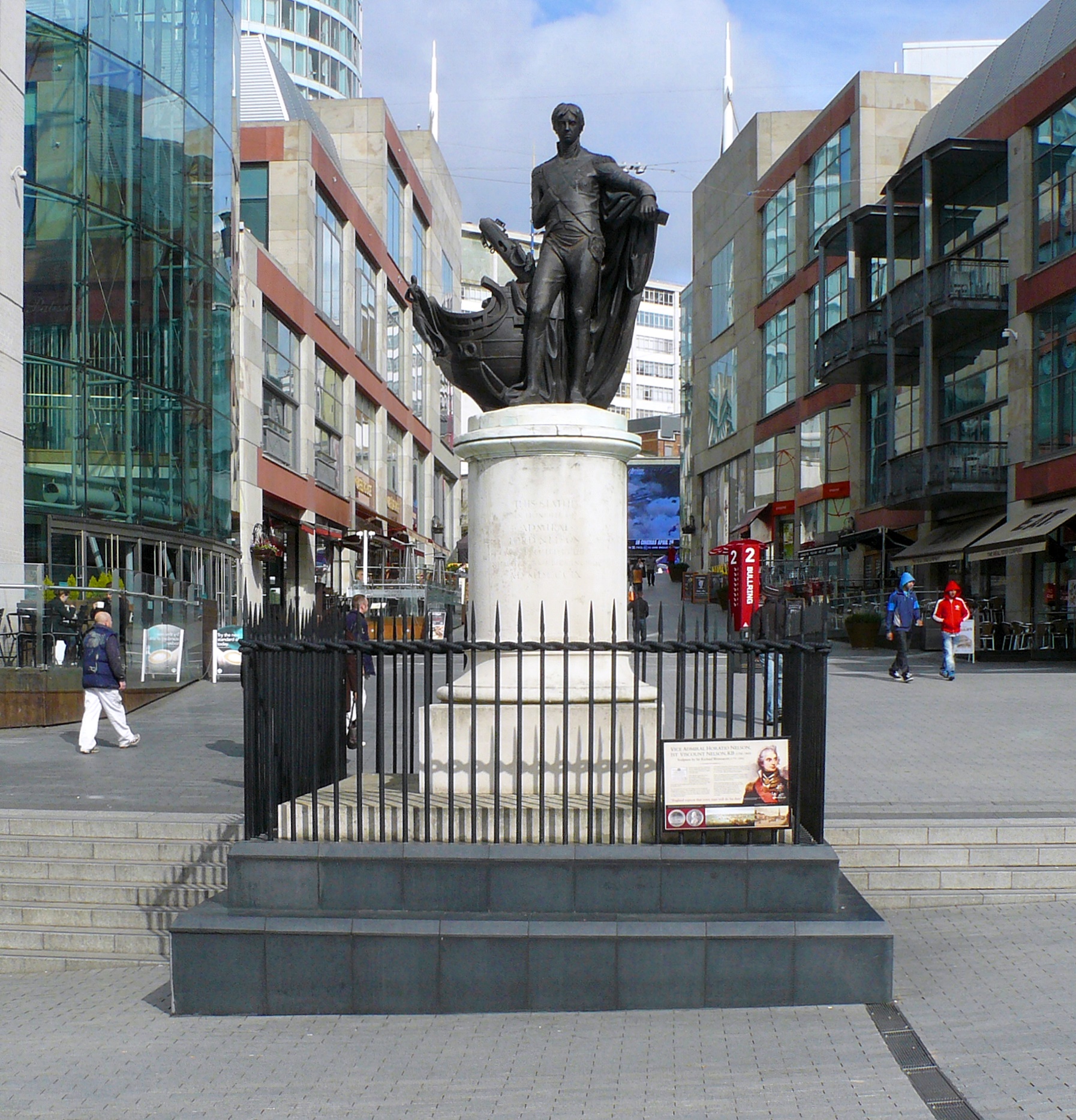
| The Bull Ring |
In 1809, this monument of Admiral Horatio Nelson created by British sculptor Sir Richard Westmacott Jr, was erected in the Bull Ring, Birmingham. Vice-Admiral Horatio
Nelson, 1st Viscount Nelson, 1st Duke of Bronte, KB (1758 – 1805), was a British naval commander, fighting in the French Revolutionary and Napoleonic Wars.
Considered a national hero, the statue was erected to commemorate his war efforts. The monument is a sister statue to one erected in Barbados, in the capital city Bridgetown, in the area known as Trafalgar Square, opposite Parliament Buildings. The statue erected in 1813, was moved to The Barbados Museum and Historical Society in 2000 Following the discovery of a letter, he wrote onboard HMS Victory. The note expressed his vehement opposition to William Wilberforce’s campaign for the abolition of the slave trade.
Image by Memorino - Own work, CC BY-SA 3.0
In 1809, this monument of Admiral Horatio Nelson created by British sculptor Sir Richard Westmacott Jr, was erected in the Bull Ring, Birmingham. Vice-Admiral Horatio
Nelson, 1st Viscount Nelson, 1st Duke of Bronte, KB (1758 – 1805), was a British naval commander, fighting in the French Revolutionary and Napoleonic Wars.
Considered a national hero, the statue was erected to commemorate his war efforts. The monument is a sister statue to one erected in Barbados, in the capital city Bridgetown, in the area known as Trafalgar Square, opposite Parliament Buildings. The statue erected in 1813, was moved to The Barbados Museum and Historical Society in 2000 Following the discovery of a letter, he wrote onboard HMS Victory. The note expressed his vehement opposition to William Wilberforce’s campaign for the abolition of the slave trade.
Image by Memorino - Own work, CC BY-SA 3.0

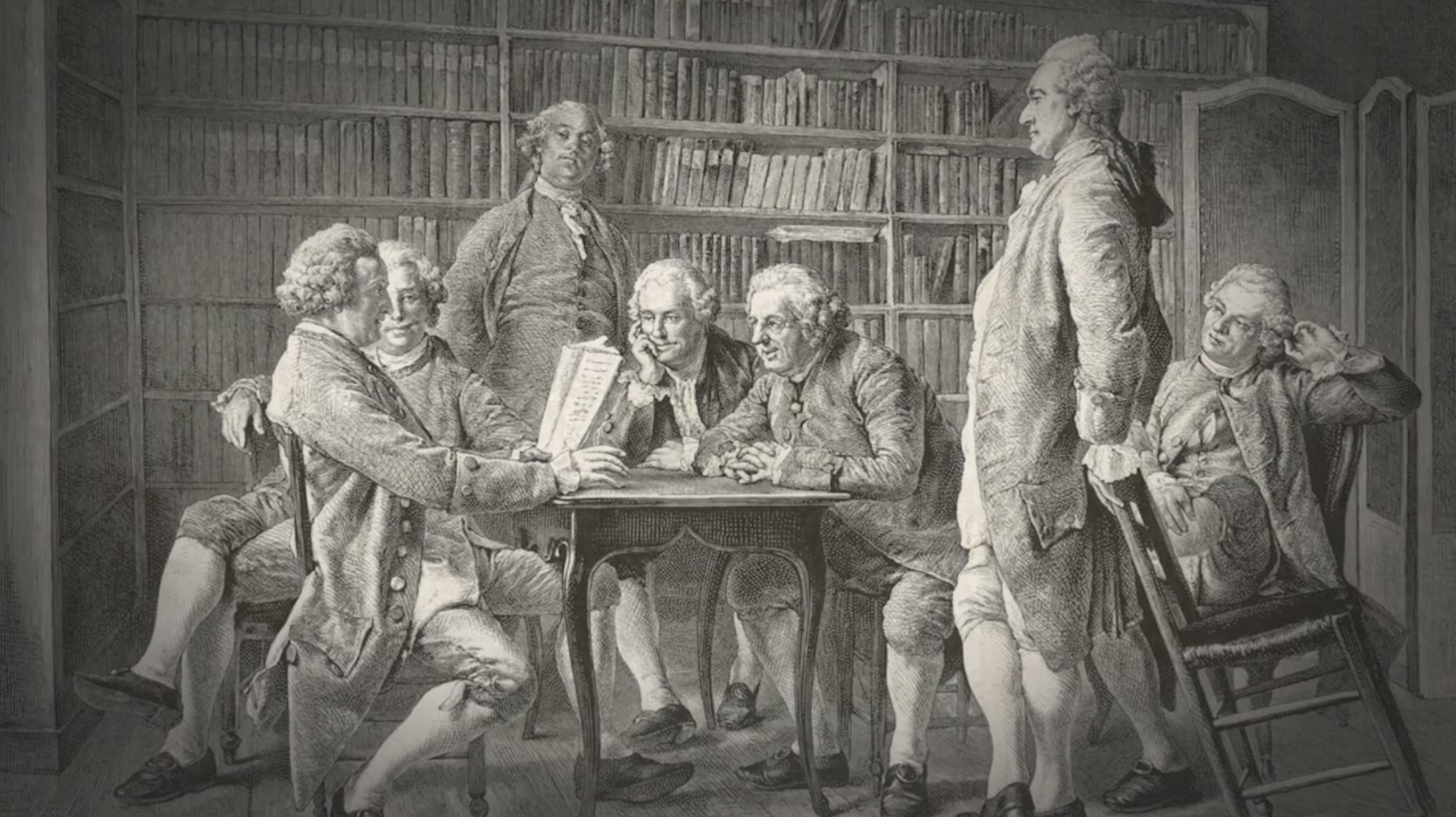
| Soho House |
Established in 1965, The Lunar Society was a group of free thinking scientists and industrialists founded by Matthew Boulton (1728 – 1809), an English manufacturer and business partner of Scottish engineer James Watt. Meeting regularly, The Society brought together some of the UK’s leading eighteenth century intellectuals, including Joseph Priestley, Erasmus Darwin, Josiah Wedgwood, James Watt, and William Withering.
At Soho House, the original men would gather for dinner to discuss and debate philosophy, arts, science and commerce. Their meetings took place at the time of the full moon, this enabled the members to proceed home; their journey back lit by the full moon. Other than debating and discovering, they also built canals and factories, managed world-class businesses — and changed the face of Birmingham.
Established in 1965, The Lunar Society was a group of free thinking scientists and industrialists founded by Matthew Boulton (1728 – 1809), an English manufacturer and business partner of Scottish engineer James Watt. Meeting regularly, The Society brought together some of the UK’s leading eighteenth century intellectuals, including Joseph Priestley, Erasmus Darwin, Josiah Wedgwood, James Watt, and William Withering.
At Soho House, the original men would gather for dinner to discuss and debate philosophy, arts, science and commerce. Their meetings took place at the time of the full moon, this enabled the members to proceed home; their journey back lit by the full moon. Other than debating and discovering, they also built canals and factories, managed world-class businesses — and changed the face of Birmingham.

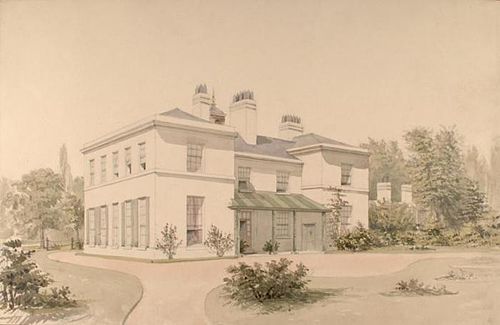
| 33, Radnor Road, Handsworth, B20 |
This lodge was the gatehouse to Heathfield Hall, home of James Watt (1736-1819) steam engineer, inventor and scientist. Born in Greenock, Renfrewshire, Scotland, the Scottish inventor is considered to have made substantial contributions to the Industrial Revolution with the advances he made in the technology of the steam engine. Known for patenting the double-acting engine and an early steam locomotive, he was elected fellow of the Royal Society of London in 1785.
Whilst he is revered for his inventions, especially ‘the separate condenser’ created in May 1765, as a solution to the problems he saw with a model Newcomen steam engine he was repairing, his legacy has been tarnished by his involvement in the transatlantic trade of enslaved Africans. The Watt enterprise was involved in the occasional purchase and trafficking of enslaved people in the West Indies, North Carolina, and Scotland, prior to the famous Joseph Knight case which made slavery illegal in Scotland in 1778.
Image By Allen Edward Everitt - http://www.bmagic.org.uk/objects/1977V43/images/138529, Public Domain, https://commons.wikimedia.org/w/index.php?curid=41205908
This lodge was the gatehouse to Heathfield Hall, home of James Watt (1736-1819) steam engineer, inventor and scientist. Born in Greenock, Renfrewshire, Scotland, the Scottish inventor is considered to have made substantial contributions to the Industrial Revolution with the advances he made in the technology of the steam engine. Known for patenting the double-acting engine and an early steam locomotive, he was elected fellow of the Royal Society of London in 1785.
Whilst he is revered for his inventions, especially ‘the separate condenser’ created in May 1765, as a solution to the problems he saw with a model Newcomen steam engine he was repairing, his legacy has been tarnished by his involvement in the transatlantic trade of enslaved Africans. The Watt enterprise was involved in the occasional purchase and trafficking of enslaved people in the West Indies, North Carolina, and Scotland, prior to the famous Joseph Knight case which made slavery illegal in Scotland in 1778.
Image By Allen Edward Everitt - http://www.bmagic.org.uk/objects/1977V43/images/138529, Public Domain, https://commons.wikimedia.org/w/index.php?curid=41205908

Login or Register to track the Globes you visit for chance to win a FREE copy of The World Reimagined book!
Find Out More


Artist Globe |
Learning Globe |
Points of Interest |